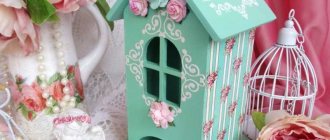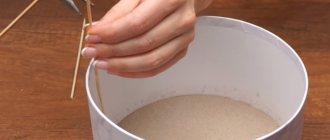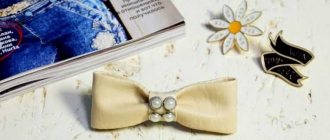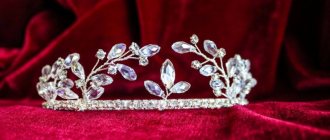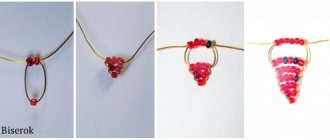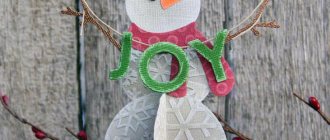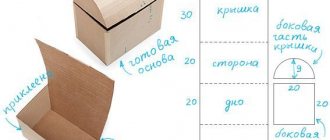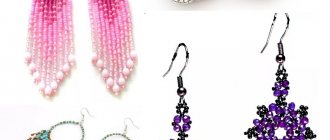Ikebana - the ancient Japanese art of arranging elegant or simple-looking bouquets - is becoming one of the amazing ways to usefully spend your free time and master a completely new type of needlework.
Do-it-yourself ikebana made from natural materials or artificial flowers will perfectly decorate any room, become a unique gift, and a source of comfort and home warmth. Ancient art will not require large expenses and will help you enjoy unlimited creativity for the benefit of soul and body.
Commandments of compilation
A Japanese bouquet often presents a composition that is unusual for the Russian eye. Its main rule will be to carry a certain meaning and wishes of the manufacturer. At the same time, making ikebana should be based on several pillars of this ancient art:
- Only beautiful flowers will not provide the desired result. Much more important will be the correct placement and arrangement of the elements of the bouquet with each other.
- The number of elements will also not determine the success of ikebana. A single flower or branch can embody all the greatness of Nature and make one admire the creation for a long time, finding new facets of charm and grace of carefully selected components. At the same time, for the art of composing ikebana, the evenness or dishonesty of its components does not play a role at all.
- The bouquet necessarily corresponds to the calendar season or event for which it is made.
- “The eyes are afraid, but the hands are doing” - this Russian proverb perfectly conveys the essence of the art of composing unusual compositions. But Japanese masters urge not only not to be afraid of the future fruits of your labor, but also to prepare before starting creation, to find peace and good mood. It is this kind of attitude that will help create a marvelous, miraculous, miraculous thing.
What other ikebana master classes are there?
A short lesson on creating flower arrangements:
Technique for creating ikebana using a floral sponge:
Master class on creating ikebana for Valentine's Day:
And here they make a composition with a candle and dried flowers:
A lesson on composing compositions from an ikebana master of the Japanese school “Sogetsu”:
Basic Rules
A simple set of rules will help you quickly master the subtle art of flower arranging. It includes several key points:
- Central element. Do-it-yourself spring or autumn ikebana for children (as well as other compositions) should have its own center, a place that is allocated to only one plant, leaf, or twig.
- Dynamic location. A Japanese bouquet should give the impression of an absolutely living organism. It should not have the severity of bouquets familiar to Russians. On the contrary, they try to place all the elements at an angle to each other, the vessel, the surface where the vase will be installed. Masters are very fond of unusually curved elements, which allow them to more fully convey the emotions of the creator of an elegant creation.
- Asymmetry. Apart from the center, ikebana should not have regular lines or artificially pretentious forms. Japanese art is designed to combine in a bouquet pieces of nature (sky - shin, earth - hikae) and man - soe, who is part of this world. Ideally, bouquet designers strive to achieve three planes that form an irregular triangle.
Before starting to create a composition, a specific place or a specific recipient is selected for it. And this is another difference from traditional bouquets, which can be presented to everyone indiscriminately.
Schools and styles
The first school was opened in the city of Kyoto in the 15th century by the monk Ikenobo Senkei. During this period, composition was taught as one of the elements of religious service. The first ikebana had a high main line 1-1.5 m in height. In the space of the temple they symbolized man's desire for the gods.
Rikka's style was distinguished by grandiose designs and precision of lines. Bamboo stems and pine branches were taken as the basis, and other plant elements were considered additional. In Rikka style, plants symbolized the sacred mountain.
Several masters worked on one piece at the same time. They studied at the Ikenobo school all their lives, and achieved the title of master only after 20 years of study. In the 21st century, Rikka ikebana is composed for major religious secular holidays.
Nageire
Simple and laconic compositions in tall vases appeared in the 16th century along with the tea ceremony. The simplicity and naturalism of the style showed the influence of the Ikenobo school: the height of a vessel with one towering flower was up to 1.5 m.
Shoka
The secular, secular style that replaced Ricca was formed in the 18th century. It reflects the traditional principle of the triangle. Linear forms indicate the symbolic interaction of man with the earth and sky. Plants were placed in both low and tall vases.
Moribana
In 1897, Unshin Ohara founded a new school named after him. The styles of Moriban and Hake stood out in it.
At the beginning of the 19th century, new flowers and plants were brought to Japan from European countries. They were not used in traditional schools. Under the influence of Western culture, a new style emerged. It combined naturalism and the features of the area, the natural beauty of living plants.
For the Heika style, narrow vases are used, and for Moribana, low bowls are used. Plants are supported on the edges of the vase or on specially provided wooden supports. It is permissible to add water to containers with flowers. In addition to traditional materials, stones, mosses and branches appear. Kenzan - a holder for fixing flowers is placed at the bottom of the bowl.
Sogetsu
After two world wars, under the influence of European culture, a free style and an avant-garde young school was formed, founded in 1929 by the artist Sofu Teshigahara. In old schools it was unacceptable to use elements of inanimate nature or artificial materials. But the artist and sculptor decided to modernize Japanese applied art. He uses glass, stones, metal, porcelain and even ropes and chains.
Among the masters of the 21st century, unusual form, novelty and dynamism come first. For example, the branches should be curved in an unusual and even whimsical way to attract the viewer's attention.
Materials
Traditional ikebana is based on the use of living plants. This word is translated from the language of the first compilers of elegant bouquets.
But today other elements are acquiring no less beauty:
- dried flowers or simply dried flowers;
- roots and branches of trees and shrubs;
- stones and shells;
- seeds;
- decorative elements made of glass, plastic, metal.
Properly selected do-it-yourself ikebana from artificial flowers can take its rightful place among bouquets of quickly crumbling petals of real buds.
The branches in the vessel are usually fixed at one of four points. It can be located in the foreground or background, left of center or right.
First, the largest components of the bouquet are installed, then a place is determined for smaller elements, and the remaining gaps are filled with moss, paper, pine cones and other materials.
The simplest DIY ikebana in 5 minutes
To create it you will need:
- Tall narrow vase (from 30 cm high and above);
- Secateurs or scissors;
- 2 orchids;
- Decorative items - glass balls, decorative sand;
- Tinga.
Stages of work:
- Place half of the vase with decorative sand or glass balls;
- We insert two orchid branches into the filler, which we place in this way: one should be placed to the right at an angle of 15 degrees relative to the working surface, and the second should be placed to the left at 15 degrees;
- One branch should be 15 cm higher than the other;
- The ikebana of flowers ends with a sprig of tinga, which we place between the orchids with a slight inclination towards the area of the smaller one.
Vases
By the word "vase" the Japanese mean any vessel. The only requirement for it will be harmony in relation to the composition being composed.
The following are used as vases:
- wooden, porcelain, earthenware vessels:
- wicker baskets;
- rough ceramics;
- light glass vase.
When selecting a container, special attention is paid to the stability of the composition in the container. For low vessels, the bottom is often lined with kezan: a metal surface with protruding needles. This will help the bouquet stay in the correct place and not fall apart.
Pumpkin ikebana: necessary materials and tools
Naturally, to make such a beautiful craft, you will need a certain set of tools and materials. One pumpkin will not be enough for this, to put it mildly. You'll have to take a walk and carefully look for leaves and twigs. You will need:
- sharp knife;
- tablespoon;
- many beautiful autumn leaves, twigs and flowers;
- berries - rowan, chokeberry, rosehip or any other dense ones;
- floral sponge and cellophane;
- long wooden skewers;
- bright flower stickers;
- toothpicks;
- small pumpkin.
All this is necessary in order to make the perfect ikebana. But you need to remember: you should select only beautiful and not wet leaves. The pumpkin should also look good - not spoiled, cracked or rotten.
Arranging ikebana
Before you start creating, you need to carefully consider the composition and appearance of the future craft.
For craftswomen who have been engaged in such fascinating creativity for quite a long time, this will not be difficult.
For beginners, you can try to make a bouquet using small tips.
Autumn ikebana
This will be the easiest bouquet to make: the abundance of vegetables and flowers at this time of year will help you select the most prosaic objects and create amazing compositions from them.
Most often for autumn ikebana they use:
- small pumpkin;
- a highly branched branch devoid of leaves;
- cones;
- rowan branches.
A vessel is made from a pumpkin. To do this, cut off the bottom evenly so that the future vase becomes stable and does not wobble. I glue cones onto the branch and place it in the pumpkin. Rowan branches decorate the lower part of the former stem. A few dry leaves and bunches of rowan are glued to the pumpkin.
For lovers of minimalism, you can use just one bright leaf and a pine cone (chestnut, nut, small vegetable or fruit), wire and any base.
Winter ikebana
Winter ikebana will be an excellent decoration for a festive table or a replacement for a traditional Christmas tree.
The simplest bouquet can be made from pine branches and halves of citrus fruits. A Christmas ball or a festive candle will unusually complement the composition.
For those who are not ready to watch ripe oranges, tangerines, grapefruits and lemons dry, you can make a stylish New Year's decoration from the skins of fragrant fruits. To do this, they are carefully removed with a sharp knife and placed in the form of roses on coniferous paws.
Coffee lovers can make ikebana from beans of their favorite drink and orange slices.
Spring ikebana
There are still not enough flowers in spring, and they are quite expensive. Therefore, a charming bouquet can be made from paper flowers, and twigs can be found in the yard or in the park at any time of the year.
A good way to create a spring mood would be ikebana from citrus peels, lavender branches, and pine cones. Such a composition will also boost your immunity and calm your nerves after winter stress.
Ikebana will help you decorate your home in an original way and create an exquisite miracle with your own hands. To believe in yourself, just look at the photographs of these bouquets and understand that everything is not as complicated as it seems at first glance.
Rules
There are also certain rules for creating ikebana. Among the key ones are:
• Highlighting the central element. In this art, a special role in each composition is assigned to one single flower, leaf, or branch.
• Dynamics. To teach it, one tricky technique is used - the elements are located at a certain angle to the surface, the vase, or each other. For ikebana, you should choose curved branches and flowers - this way, according to the Japanese, the created creation is filled with emotions.
• Asymmetry. There is no need to try to make everything pretentious, as in our classic bouquets. In this case, everything symbolizes man, heaven, earth. And this is combined into a single whole - ikebana.
Creating a bright composition
Important! Before creating a composition, you need to think it over, determine where in the house it will be placed or to whom it will be given as a gift. It is better to place ikebana made from fresh flowers away from heating appliances and sunny windows. Otherwise, it will quickly wither.
Autumn is the time to create beautiful crafts from vegetables collected at the dacha or purchased on occasion. And if we take into account that the foreign holiday of Halloween is traditionally held in the fall, then special attention should be paid to pumpkin. She is able to realize many fantasies of creators of beautiful crafts. And a good example would be pumpkin ikebana. A bright autumn composition using this plant will not only decorate the house, but will also attract attention.
How to make a bouquet of physalis. Physalis from candies
How to make a bouquet of Physalis candies
Website HOBBIN HOUSE Handicraft Workshop.
In this master class, I will show you how to make a bouquet of Physalis sweets. Quite unusual and it doesn’t even seem like a flower at all. But physalis is great for candy bouquets; it is very decorative, although not too rustic.
To make this “flower” we will need: Ferrero Rocher candies, silver, blue and orange corrugated paper with a transition, thin wire, wooden skewers for kebabs, blue organza, glue gun.
Let's take our candies, we will need 15 pieces for the bouquet. So, you can safely gobble one up.
We take the corrugation and cut off a piece from it approximately 15 cm wide and 2.5 divisions high, this is also approximately 15 - 17 cm. Fold the paper into 5 equal parts.
We cut out these petals and twist the ends.
We bend the centers of the petals, screw the petals to the skewer. Glue a candy in the middle. If we do it this way, we get a physalis with 5 petals, it looks quite nice. But I liked the option with 6 petals more, although in the original there are 4 petals. Well, okay, let's start with 6 petals.
We make two blanks of 3 petals each, twisting the ends.
We bend the centers, screw 3 petals to the skewer with wire.
Now, add 3 more petals so that they are in a checkerboard pattern. We bend the edges of the petals towards the middle.
Again, twist the edges of the petals so that the petal bends well in the middle.
From silver corrugation, we cut out a blank for the tails, twist the ends well and bend them in the desired direction.
We screw this blank to the base of the “flower”. Cut out a rectangle from organza and fold it diagonally.
We assemble the organza around the flower, you can glue it with a glue gun or simply fix it with thin wire.
We do this with all 15 flowers. That's all, Physalis is ready. It turned out pretty good.
We collect all our flowers into a bouquet, add film and corrugation.
This is the autumn bouquet I got. It is done quickly and without problems. Website HOBBIN HOUSE Handicraft Workshop.
